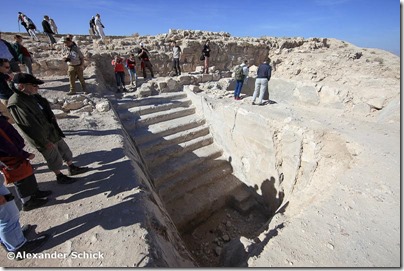Haaretz reports on the discovery of new fragments of Dead Sea Scrolls.
New fragments of the Dead Sea Scrolls have been found in the Cave of the Skulls by the Dead Sea in Israel, in a salvation excavation by Israeli authorities. The pieces are small and the writing on them is too faded to make out without advanced analysis. At this stage the archaeologists aren’t even sure if they’re written in ancient Hebrew, Aramaic or another language. “The most important thing that can come out of these fragments is if we can connect them with other documents that were looted from the Judean Desert, and that have no known provenance," says Dr. Uri Davidovich of the Hebrew University of Jerusalem, among the scientists investigating the caves. […] The latest finds, two papyri fragments about two by two centimeters with writing and several fragments without discernible letters, were made during a three-week salvage excavation in the Cave of the Skulls this May and June by a joint expedition of the Israel Antiquities Authority and the Hebrew University of Jerusalem. The excavations were led by Uri Davidovich and Roi Porat of the Hebrew University, together with Amir Ganor and Eitan Klein from the IAA.
Read the full story here.
